StickyMCP: Notes That Stick, Even in the Cloud
27 September 2025
A MCP server is something an AI system can reach out to and actually do something with, unlike its usual diet of stale training data and existential boredom.
StickyMCP implements something refreshingly familiar: sticky notes. You type a short message, and it gets stored. Just like the real ones you stick on your coffee machine, desk surface, or whiteboard. Minimalism meets machine memory.
I built it during hackathon week, where ideas fly fast and only the sticky ones survive 🧷
Example: Using MCP Inspector to Display Text and Graph Output from the StickyMCP Server
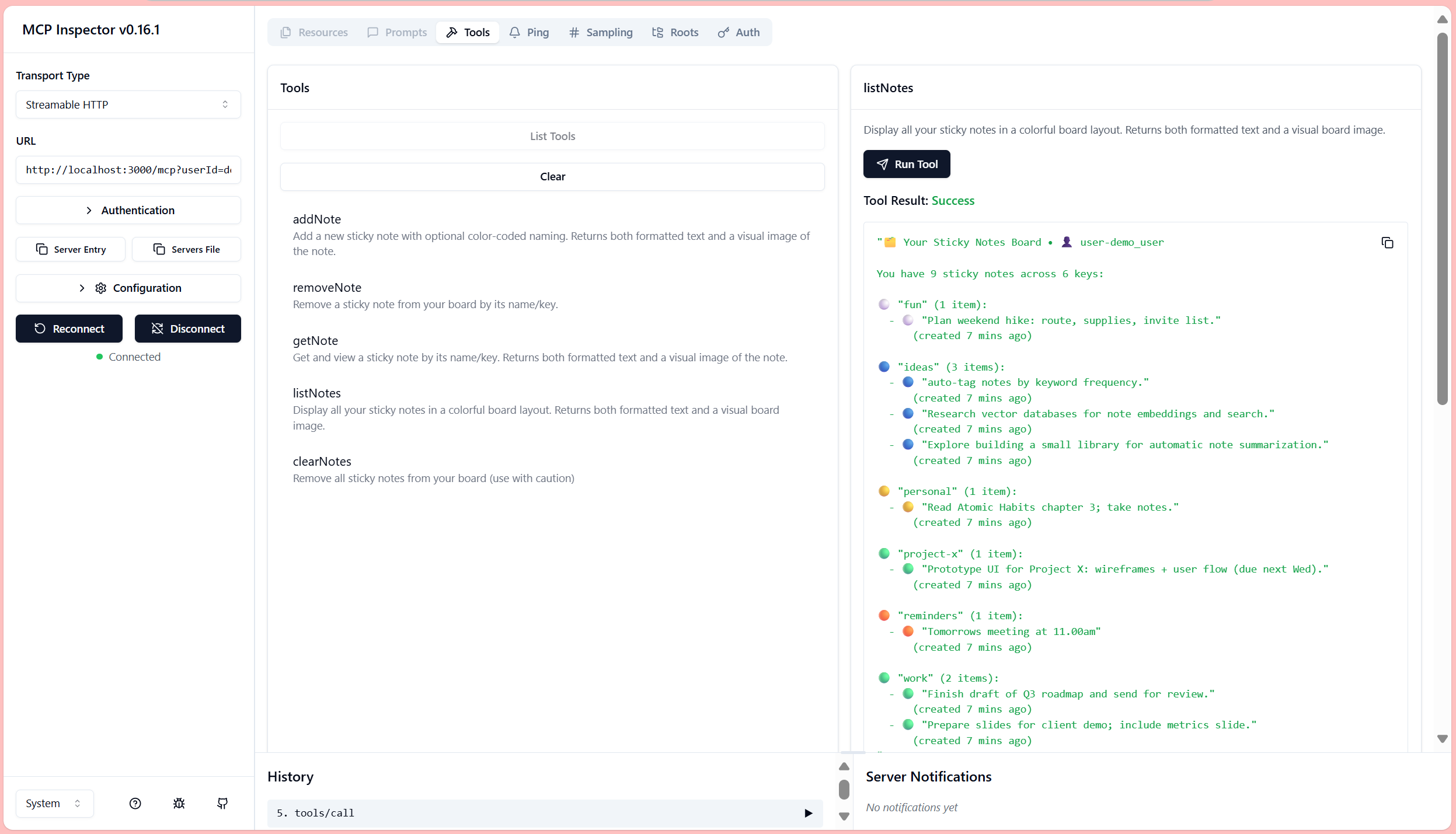
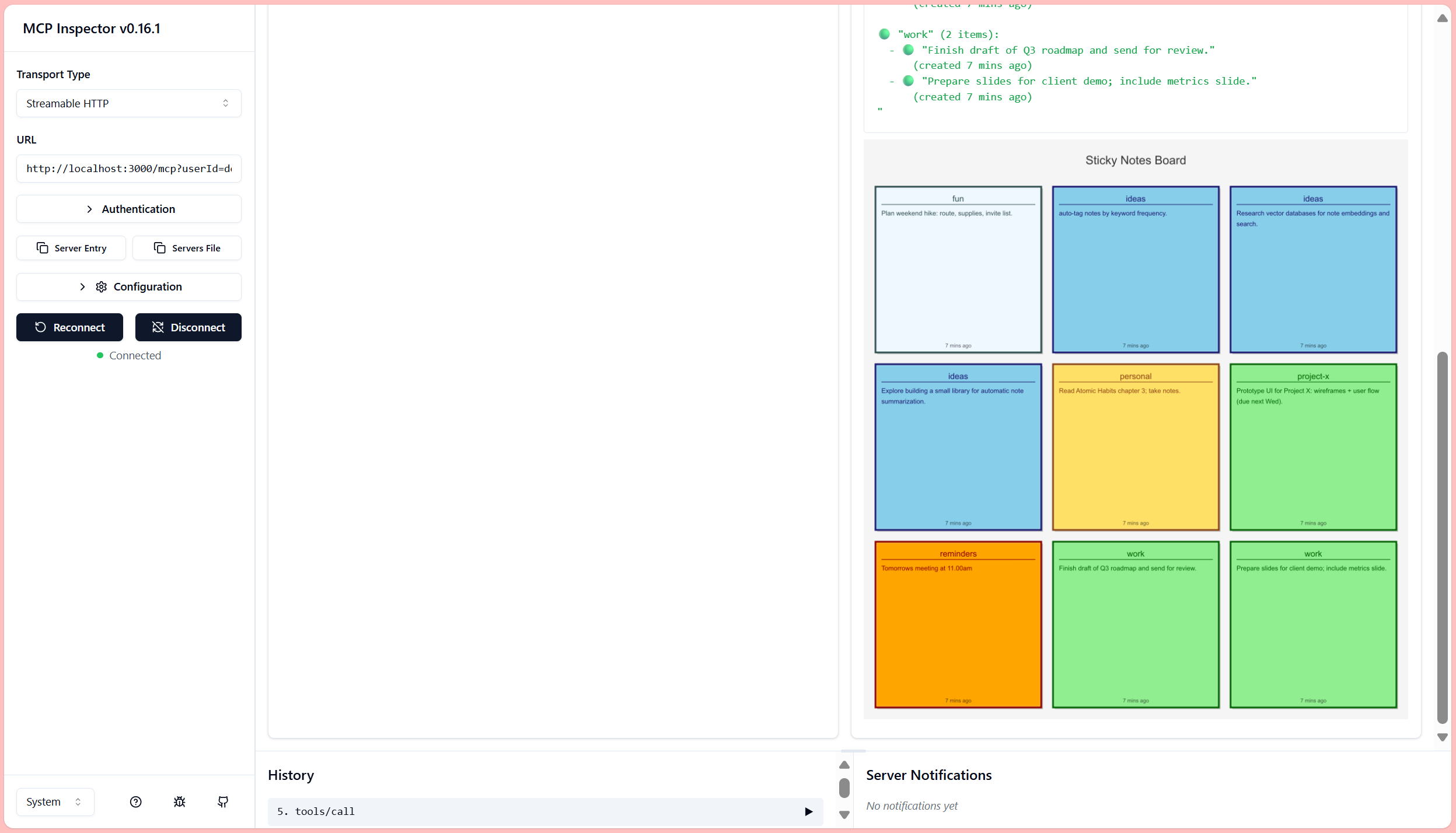
🐙 GitHub Repository
Sticky code, sticky notes, find it all here:
https://github.com/jurgen178/mcp-sticky-notes
(also mirrored at https://github.com/microsoft/mcp-sticky-notes)
🔧 What It Is
StickyMCP is a lightweight MCP server that lets users create, list, and delete virtual sticky notes, stored in Azure Table Storage and rendered either as plain text or classic sticky note-style PNGs. It showcases how the Model Context Protocol (MCP) can power distributed, developer-friendly microservices with visual flair.
StickyMCP provides a clean API for managing notes across systems, integrates naturally with Visual Studio Code Copilot Chat, and supports both HTTP and STDIO transports.
Each note is stored in Azure Table Storage (with in-memory fallback) and rendered as:
- Plain text (for automation and workflows)
- PNG images (for dashboards, markdown previews, or collaborative tools)
🧪 Core Features
- Add note
- List all notes
- Get note by ID
- Delete note by ID
- Delete all notes
- Group notes by logical key (e.g., personal, work, ideas)
- Render notes as PNGs
- Use in-memory fallback if Azure is unavailable
- HTTP or STDIO transport protocol
🖼️ Example Screenshots
Add a Sticky Note from a Client
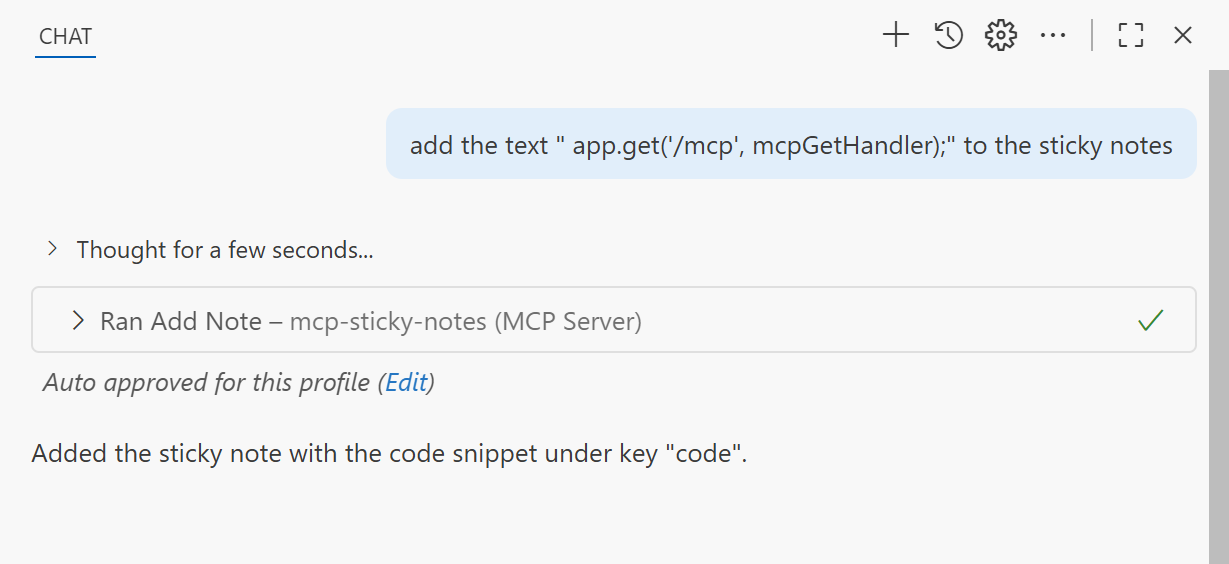
Console Logging for Adding a Sticky Note
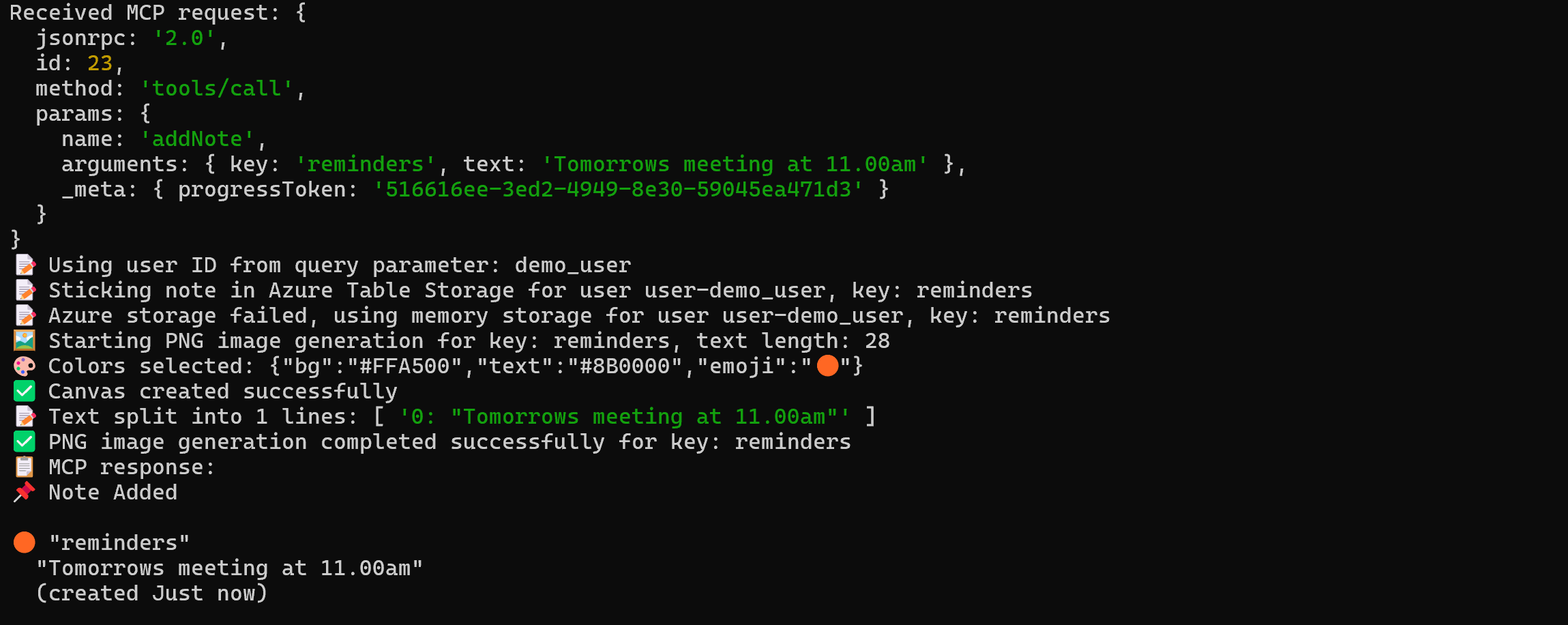
List all Sticky Notes from a Client
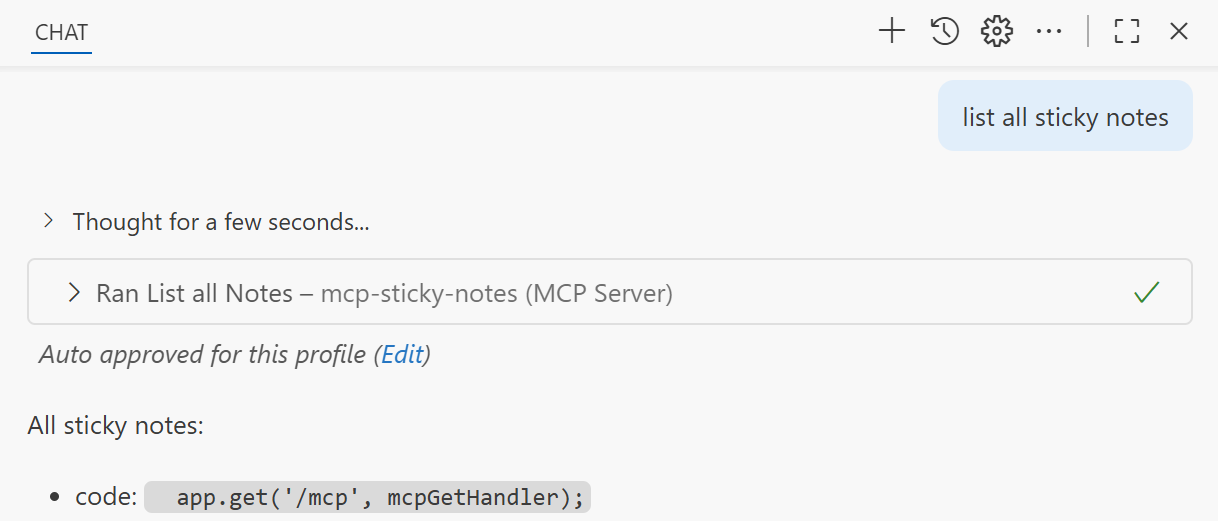
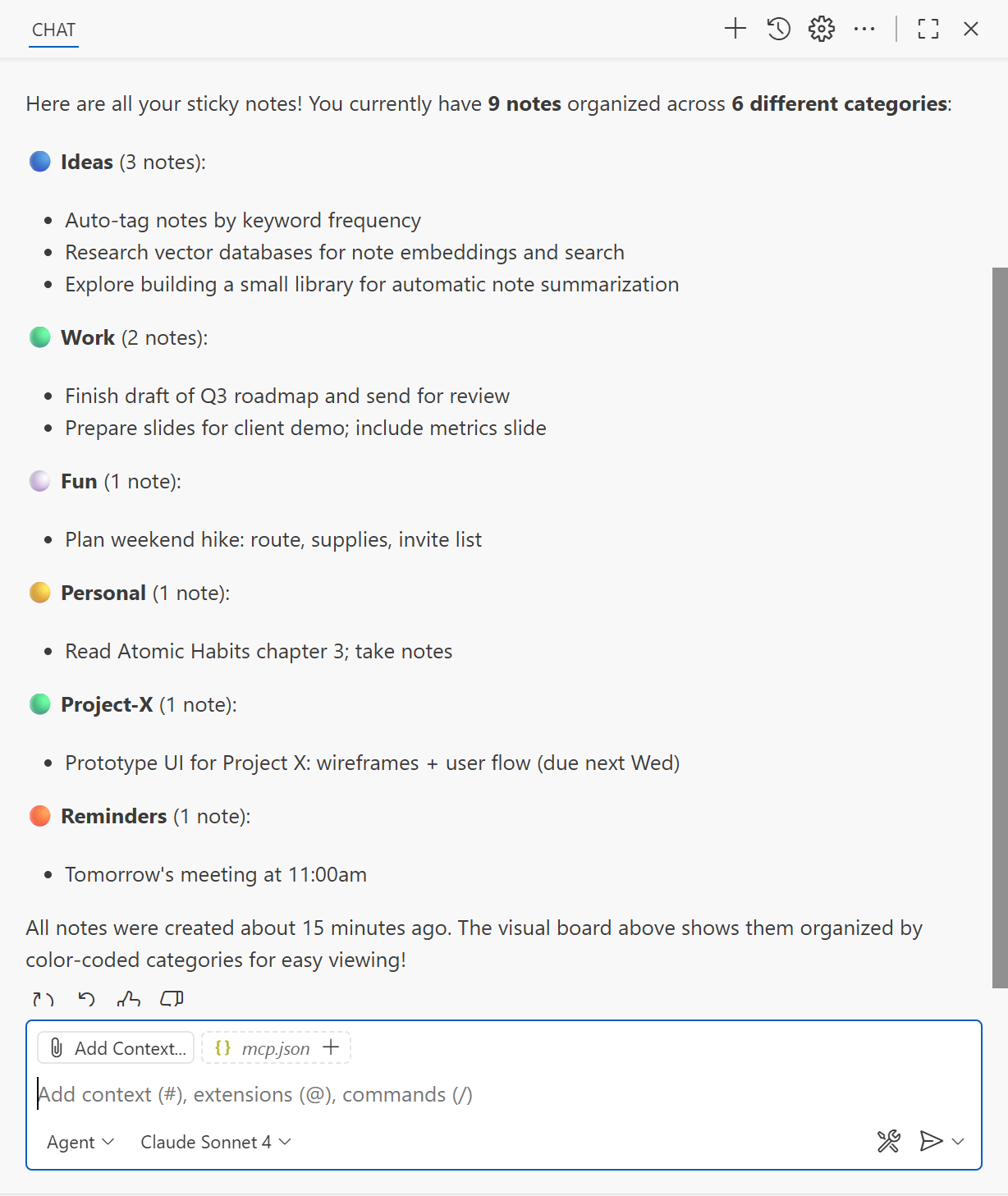
Console Logging for Listing All Sticky Notes
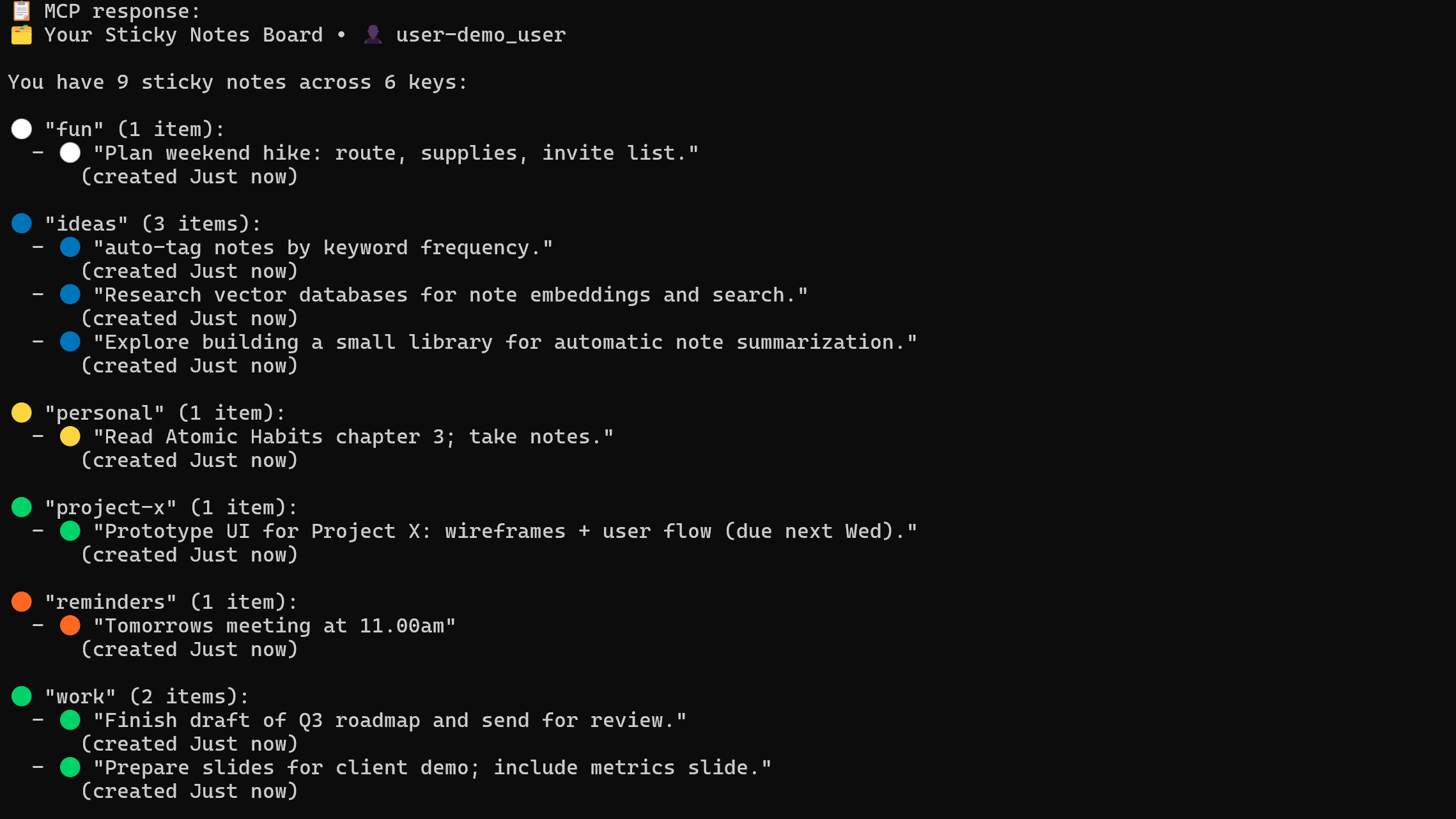
Short demo video showing how to add, list, and inspect sticky notes using MCP Inspector
🛠️ Tech Stack
- Server: MCP implementation in TypeScript
- Storage: Azure Table Storage (Managed Identity preferred)
- Rendering: PNG generation via node-canvas
📦 Installation
git clone https://github.com/jurgen178/mcp-sticky-notes
cd mcp-sticky-notes
npm install
☁️ Run on Azure
Deploy server.ts as a WebApp on Azure. CoPilot can assist with setup, it is trained to handle this kind of deployment. Just ask.
💻 Run Locally
npx ts-node server.ts
Server responds on http://localhost:3000
Update your mcp.json:
{
"servers": {
"mcp-sticky-notes": {
"url": "http://localhost:3000/mcp?userId=demo_user"
}
}
}
🧭 MCP Inspector
Use the MCP Inspector to debug npx @modelcontextprotocol/inspector
Set command to http://localhost:3000/mcp?userId=demo_user
🌐 HTTP Endpoints
POST /mcp
GET /mcp
DELETE /mcp
MCP clients must initialize first to receive a mcp-session-id.
🖼️ Client Limitation for Images
Not all clients can display the generated PNG images. For example, Visual Studio Code Copilot currently does not render them. Until image support is available, visual results can be viewed using the MCP Inspector.
📍 Why It Matters
StickyMCP demonstrates how MCP can be used to build scalable, visually engaging microservices that integrate seamlessly with Azure and developer tools.